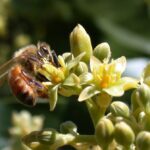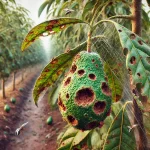Proper irrigation and water management are crucial for success in avocado production. Due to the avocado’s water requirements and its sensitivity to both excess and lack of water, it is essential to implement efficient irrigation techniques and manage water resources responsibly. In this article, we explore the best practices for avocado irrigation, with a special focus on drip irrigation, and discuss the importance of proper water management to optimize production without wasting resources.
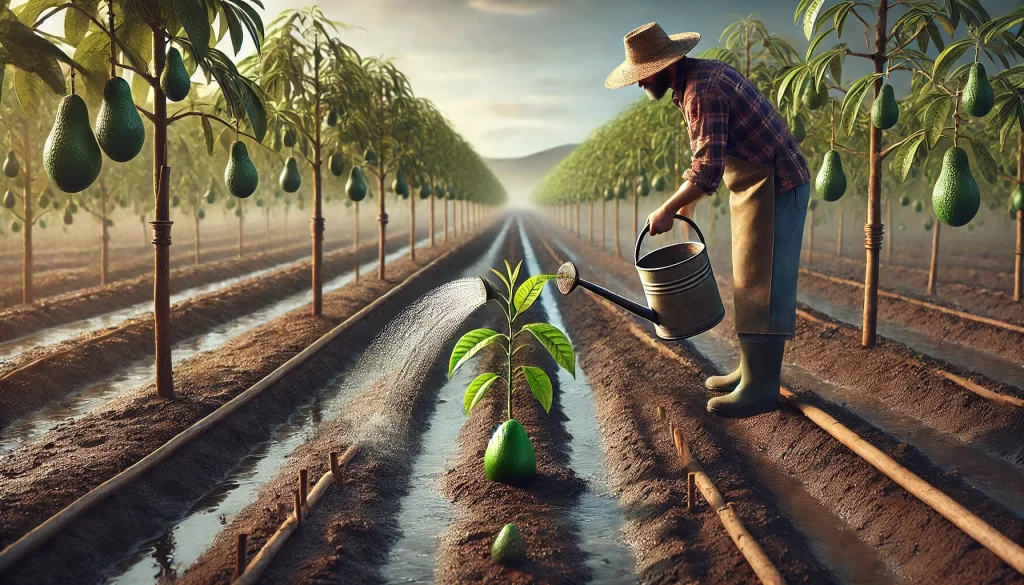
Avocado Water Requirements: Understanding the Need for Water
Avocado is a water-intensive crop, especially during its growth and fruit production stages. The amount of water needed varies depending on factors such as the tree’s developmental stage, climate, soil type, and planting density.
Critical Irrigation Stages
- Tree Establishment: During the first few years, young trees require frequent and light watering to establish a strong root system.
- Flowering and Fruit Set: During flowering and fruit set, water demand increases significantly. A water deficit at this stage can reduce fruit set and, consequently, the final production.
- Fruit Development: As fruits grow, it is crucial to maintain consistent soil moisture to ensure proper fruit development and prevent issues like premature fruit drop.
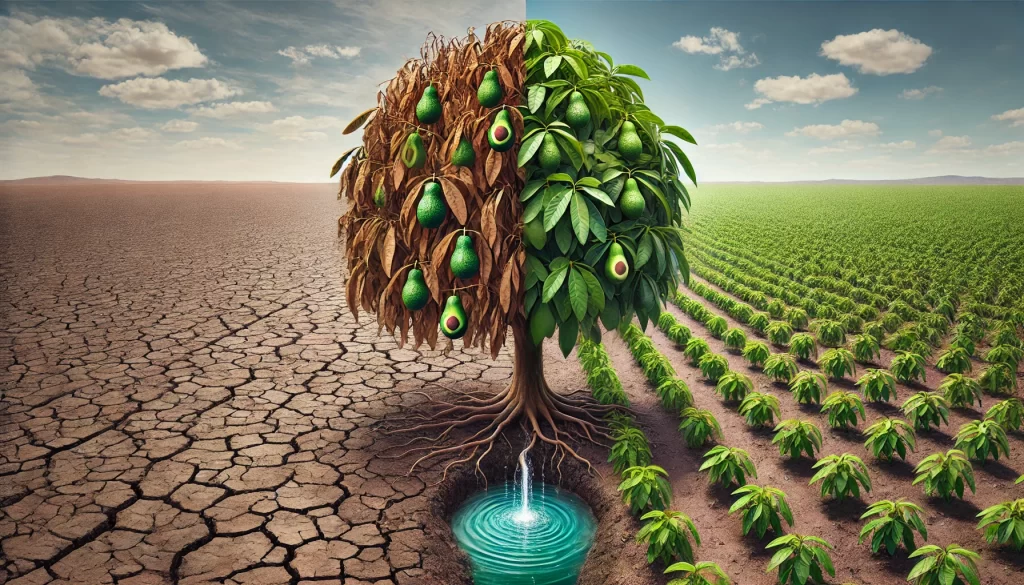
Efficient Irrigation Techniques: Drip Irrigation
Drip irrigation has become one of the most efficient and effective techniques for avocado cultivation. This technique allows water to be delivered directly to the tree’s root zone, minimizing water waste and ensuring the tree receives the exact amount it needs.
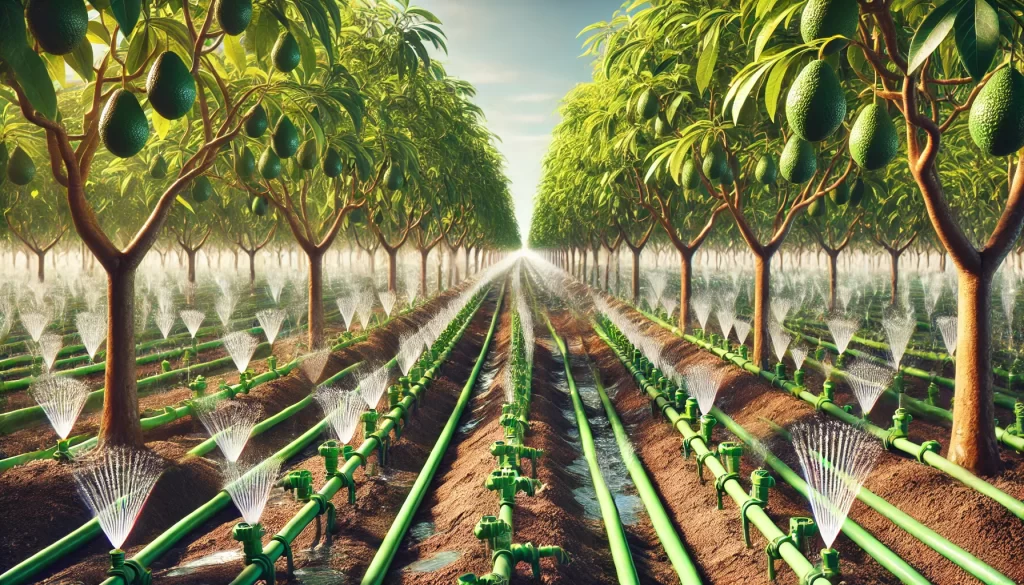
Advantages of Drip Irrigation
- Water Use Efficiency: Drip irrigation reduces losses due to evaporation and runoff, allowing for more efficient use of water. Compared to sprinkler or flood irrigation, drip irrigation can save up to 50% of water.
- Uniform Distribution: The drip system provides water uniformly to each tree, which is crucial to avoid water stress and ensure uniform growth.
- Control and Flexibility: Drip irrigation systems can be automated and adjusted according to the specific needs of each orchard, allowing for precise control of irrigation.
Case Study: Drip Irrigation Implementation in Chile In an avocado orchard in the Valparaíso Region of Chile, farmers implemented a drip irrigation system to address water scarcity. After installation, they observed a 30% increase in water use efficiency and an improvement in the quality and quantity of the harvest. This success was attributed to the system’s ability to deliver water precisely and timely, adjusting to climatic variations and crop needs.
Proper Water Management: Strategies to Optimize Production
Water management in avocado cultivation involves not only the efficient application of irrigation but also the comprehensive management of the entire water system in the orchard.
Soil Moisture Monitoring: Constant soil moisture monitoring is essential to adjust irrigation according to crop needs. The use of tensiometers, capacitance probes, and moisture sensors can provide real-time data, allowing farmers to make informed decisions.
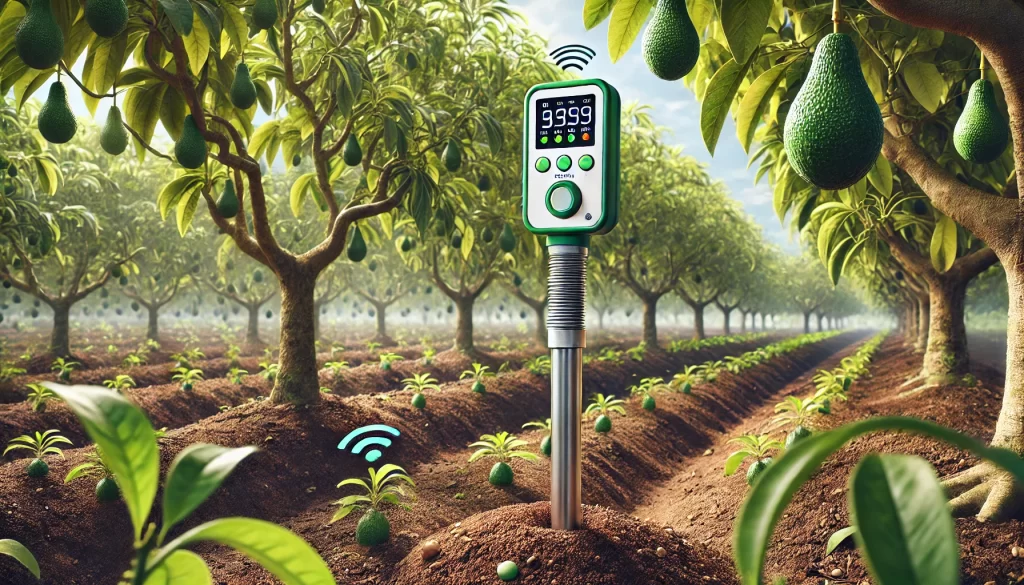
Irrigation Scheduling: Irrigation scheduling should be based on the tree’s water needs at each development stage, as well as soil and climatic conditions. For example, in sandy soils, which have lower water retention capacity, irrigation should be more frequent but less intense.
Controlled Deficit Irrigation Strategies: In some situations, controlled deficit irrigation (CDI) can be applied, a technique that reduces the amount of water during certain stages of fruit development to improve water use efficiency and, in some cases, fruit quality. However, this technique must be managed carefully to avoid negative impacts on production.
Use of Mulches and Cover Crops: The use of mulches or cover crops can help reduce soil water evaporation, improve moisture retention, and reduce erosion, contributing to efficient water management.
Case Study: Monitoring and CDI Use in California In an avocado orchard in California, farmers implemented a soil moisture monitoring system along with a controlled deficit irrigation strategy during the fruit’s stone-hardening stage. This combination allowed them to reduce water use by 20% without compromising crop quality. Additionally, the monitoring system helped avoid both water stress and over-irrigation, resulting in significant resource savings.
Water Conservation and Sustainability
Responsible water use in avocado cultivation is essential for the long-term sustainability of water resources, especially in regions with water scarcity.
Conservation Practices
- Rainwater Harvesting and Storage: In areas with seasonal rainfall, rainwater harvesting and storage can provide an additional source of water for irrigation during dry periods.
- Reuse of Treated Wastewater: In some regions, treated wastewater is being used for avocado irrigation, which reduces pressure on freshwater resources.
Environmental Impact: Implementing efficient irrigation practices not only improves orchard productivity but also minimizes environmental impact by reducing water consumption and associated runoff contamination from fertilizers and pesticides.
 AgronoBlog – Agriculture Blog
AgronoBlog – Agriculture Blog 